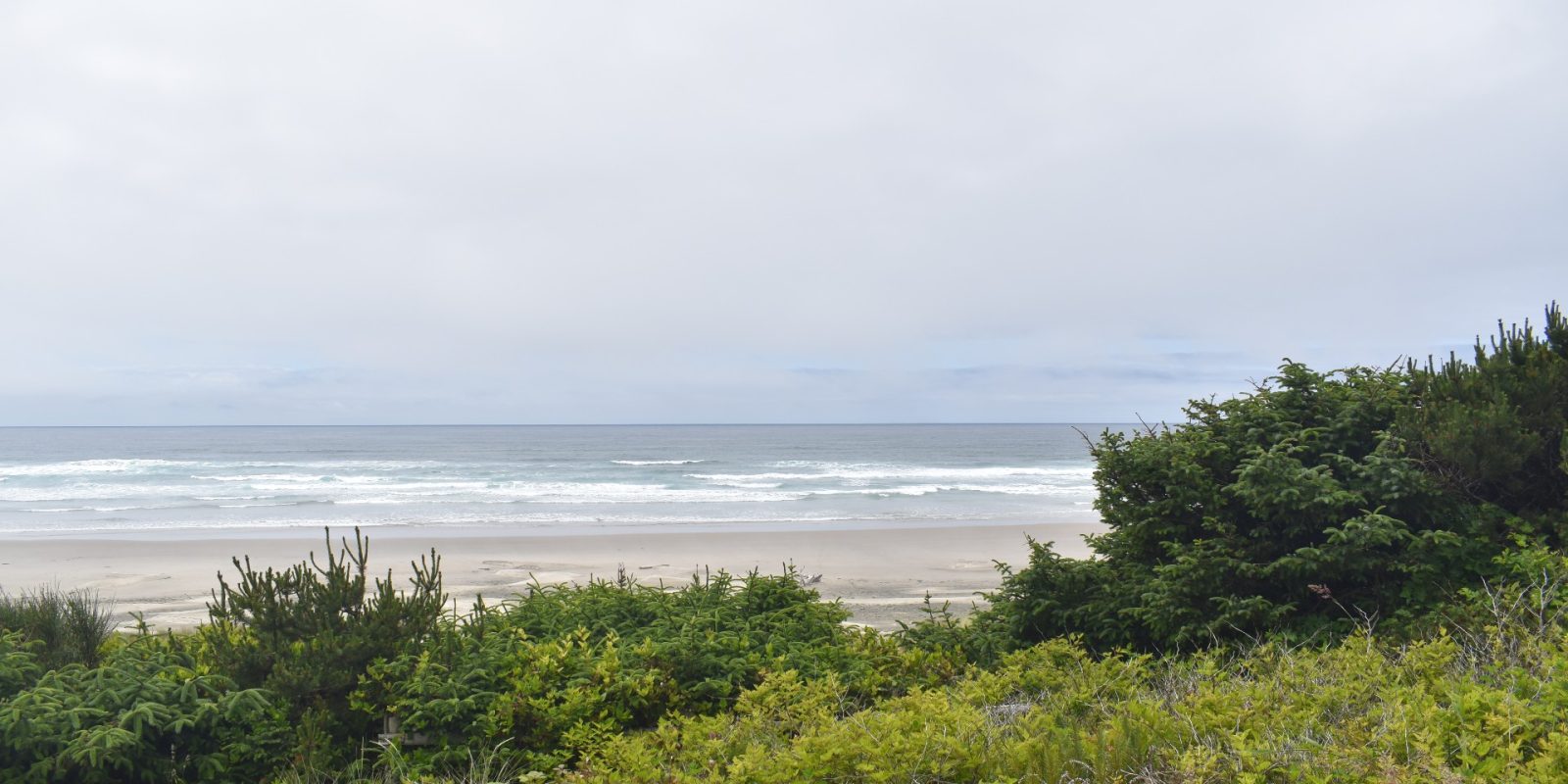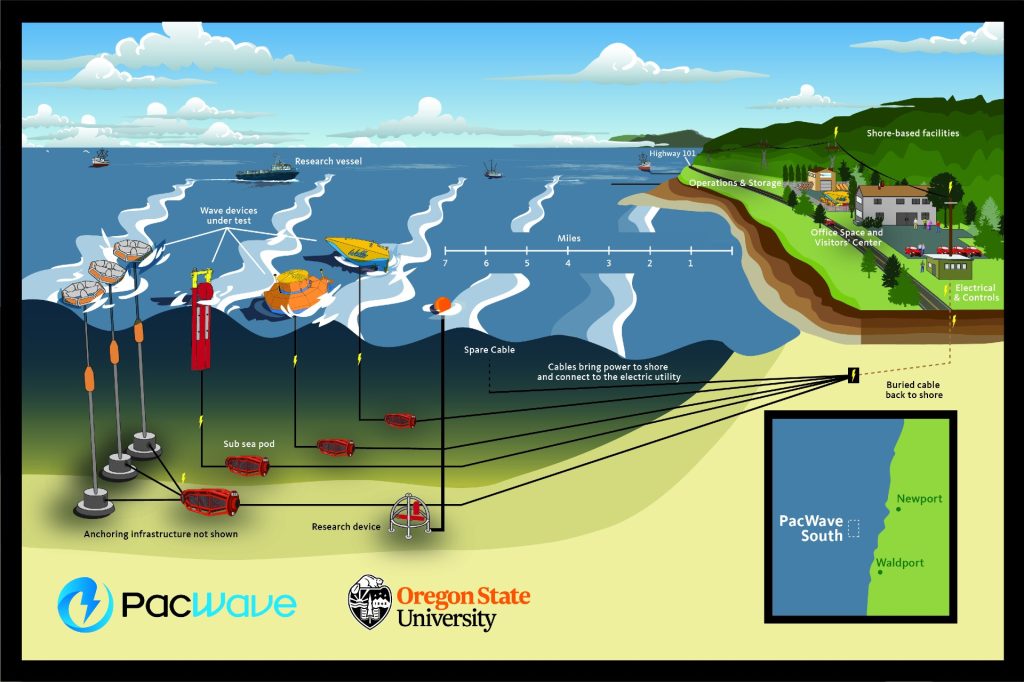
PacWave is a US Department of Energy-funded, grid-connected, full-scale test facility for wave energy conversion technologies. It’s the first of its kind in the US, and construction is well under way.
PacWave is also a joint venture with the state of Oregon and Oregon State University. It’s being developed off the coast of Newport, Oregon.
Here’s what PacWave is going to look like, and how it’ll work:

PacWave will be sited in water between 213 to 256 feet (65 to 78 meters) deep. It will be able to accommodate up to 20 wave energy converters – devices that convert wave energy into electricity – in four separate berths at the same time.
Each berth will produce up to 5 megawatts (MW) of energy and will have a dedicated transmission cable – so the test site’s maximum power output from the test site will be 20 MW. Paris-based global cable-making giant Nexans today announced that it’s been selected to provide the four medium voltage AC cables (pictured above) that bring the energy from the berths to shore. The cable lengths are around 20 km (12.4 miles) each.
PacWave is expected to come online by 2024.
It’s still early days for marine renewable energy technologies, but SAE Renewables yesterday announced that its MeyGen tidal stream power project in Scotland, off the coast of Pentland Firth, generated the world’s first 50GWh of electricity from tidal power – a significant milestone for generating electricity from tidal power. The tidal stream array in Scotland is a different setup from PacWave: It’s made up of four 1.5 MW turbines, for a total capacity of 6 MW. Three turbines are currently in operation.
Photo: Nexans
UnderstandSolar is a free service that links you to top-rated solar installers in your region for personalized solar estimates. Tesla now offers price matching, so it’s important to shop for the best quotes. Click here to learn more and get your quotes. — *ad.
FTC: We use income earning auto affiliate links. More.






Comments